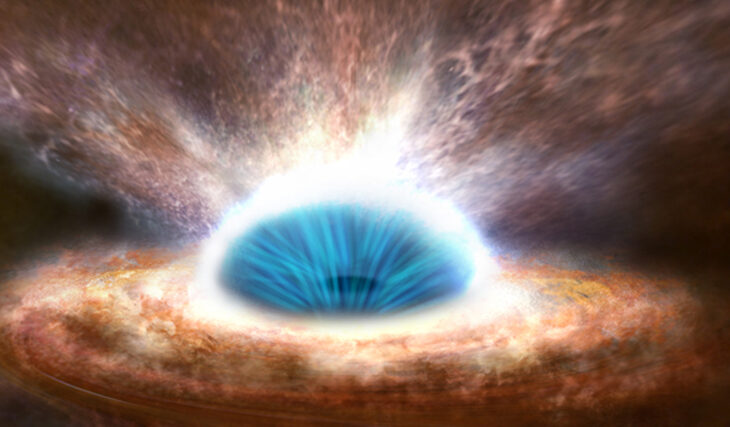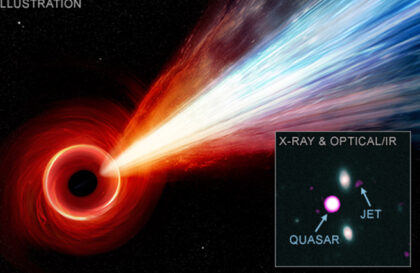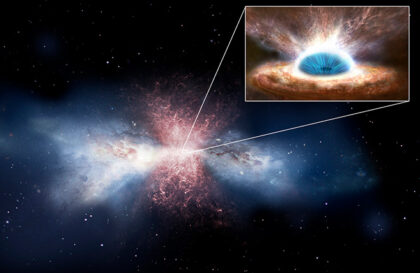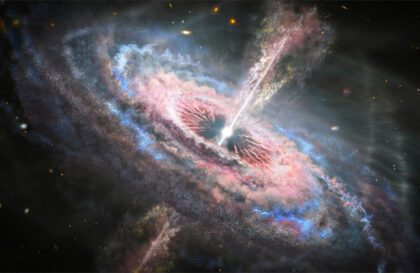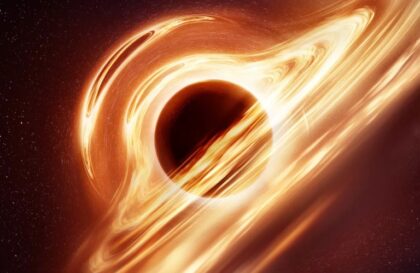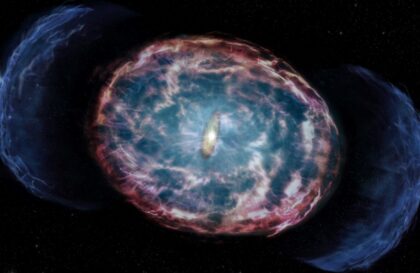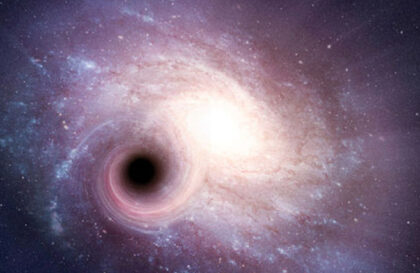Galaxies began to form stars when the Universe was several hundred million years old. More than 10 billion years ago, star formation slowed down after reaching its peak of activity, and modern galaxies produce only a few stars a year.
Astronomers have been searching for the reasons for this slowdown for a long time. Supermassive black holes at the centers of galaxies have come under suspicion. Recently, researchers have begun to find direct evidence of the influence of these black holes on the global decline in star formation.
Black hole wind
Winds from supermassive black holes located at the centers of galaxies can blow out ionized gas at speeds up to about one-third the speed of light, reducing the available material for star formation in these galaxies.
Supermassive black holes, found at the center of most galaxies, are extremely dense and compact objects with masses ranging from millions to billions of times the mass of our Sun.
Black-hole winds sweep away the gas in galaxies – Artist’s impression. Credit: ESA/ATG medialab
Many of them are relatively passive, such as the one at the center of our Milky Way. However, some of them devour their surroundings with great appetite. Some of these black holes actively consume surrounding gas and release it through powerful winds and jets. As a result, interstellar gas is depleted. There are not enough gas molecules to form stars. Star formation in the galaxy is slowed down or even completely suppressed.
The culprit behind galactic gas flows has been found
Until recently, astronomers could not fully understand how winds from black holes affect galaxies. They could not observe these winds simultaneously at different scales in the same galaxy. A new study has overcome this barrier.
The galaxy IRAS F11119+3257, ULIRG, is located at a distance of about two billion light years. This galaxy is known from the Herschel telescope’s observations of large-scale outflows of molecular gas and strong X-ray emission. In May 2013, astronomers used the X-ray telescope on the Suzaku moon to observe this galaxy. They discovered one of the most powerful winds ever detected, caused by black hole accretion.
Galactic outflow, galaxy IRAS F11119+3257, ULIRG. Credit: ESA/ATG
Researchers have discovered that winds from the black hole in the galaxy IRAS F11119+3257 significantly impact galactic gas. These winds start at about 25% of the speed of light at the black hole, removing about one solar mass of gas annually.
The winds slow down as they move away from the black hole, but they capture hundreds of solar masses of gas annually, effectively removing them from the galaxy. This is the first compelling evidence that black hole winds can cause large-scale gas loss in galaxies, potentially stopping the formation of new stars.
How quickly does the gas-blowing process develop? How many galaxies are involved in this? How soon will stars not be born because all the gas will be blown away somewhere? And where it blows away, stars can form?
Banner image: Artist’s impression of a black hole wind. Credit: ESA/ATG medialab
Image credit:
https://sci.esa.int
https://www.esa.int
